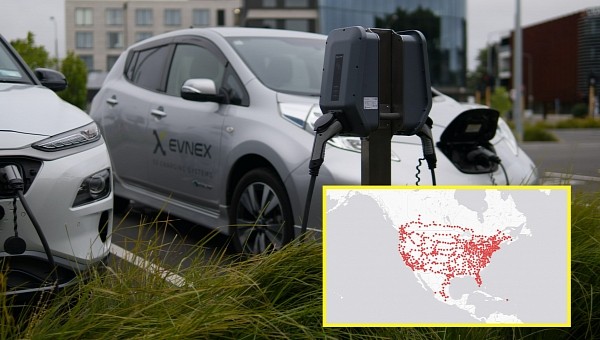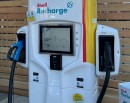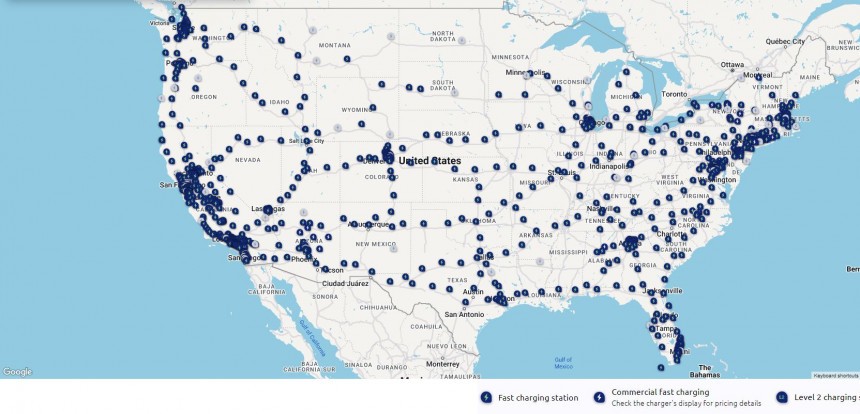If you live far away from an urban area, chances are you may consider electric vehicles (EVs) unfeasible because of the lack of fast-charging options and their limited range. But the Charging and Fueling Infrastructure Discretionary Grant Program launched by the U.S. Department of Transportation (DOT) might change your perspective. It unlocks $2.5 billion in federal funding for small communities and Tribes that want to go electric for real!
No matter what your stance is on EVs, having high-power chargers available in your area is a good thing. Studies have shown that the value of homes can increase when situated close to such locations. Besides that, a reliable charging network can also help with accommodating more visitors, tourists, or digital nomads (remote workers who travel freely), thus creating more business opportunities and possibly helping the local budget collect more tax, which can then be reinvested back into the community.
Right now, Tesla is the only EV charging solution provider that has at least one high-power stall in every state. Volkswagen’s Electrify America comes in a close second, but leaves North Dakota out until the one scheduled location comes online. Even though the competition is increasing in this space and that’s good for EV owners, to truly expand the utility of the zero-tailpipe emission powertrain more chargers are needed in smaller or more remote communities. Rivian, for example, understood this need and, through its adventure-based philosophy, launched an initiative to put stalls in more underserved locations.
To accelerate the move away from fossil fuels, the current U.S. administration launched the Charging and Fueling Infrastructure (CFI) Discretionary Grant Program, which will spend $2.5 billion over five years just to give more Americans opportunities to replenish their vehicles’ batteries faster.
Electrify America Charger Map
For 2023, the DOT has $700 million ready to give communities who want EV chargers. That includes cities, counties, local governments, and Tribes, but they must apply to receive the funding. The procedure is similar to that included in the NEVI program and even has the same minimum mandatory standards that must be included in the applications. This means stalls will provide at least 6 kW of power per port for AC chargers, while the DC ones must have a capacity of 150 kW minimum.
The locations will operate 24 hours per day if they are near Alternative Fuel Corridors, which essentially overlap the U.S. highway system. If these chargers are in other places, they must be available to EV drivers at least as frequently as the business operating hours of the site host.
“A priority of the CFI Program is bringing EV charging into urban and rural communities, downtown areas, and local neighborhoods, particularly in underserved and disadvantaged communities,” says the DOT.
But besides helping smaller communities access federal funding for EV chargers, the same program will support new initiatives that target the building of hydrogen, propane, and natural gas fueling infrastructure. Clean powertrains are needed if we are to reach our decarbonization goals.
Interested parties who want to receive the money as soon as possible must apply by May 30, 2023. According to the DOT, those eligible are:
Finally, through this program and the NEVI, the U.S. wants to reach a target of 500,000 EV chargers by 2030. Once this target is reached, nobody will fear running out of juice on the highway or in some remote place. It will truly be liberating!
Right now, Tesla is the only EV charging solution provider that has at least one high-power stall in every state. Volkswagen’s Electrify America comes in a close second, but leaves North Dakota out until the one scheduled location comes online. Even though the competition is increasing in this space and that’s good for EV owners, to truly expand the utility of the zero-tailpipe emission powertrain more chargers are needed in smaller or more remote communities. Rivian, for example, understood this need and, through its adventure-based philosophy, launched an initiative to put stalls in more underserved locations.
To accelerate the move away from fossil fuels, the current U.S. administration launched the Charging and Fueling Infrastructure (CFI) Discretionary Grant Program, which will spend $2.5 billion over five years just to give more Americans opportunities to replenish their vehicles’ batteries faster.
For 2023, the DOT has $700 million ready to give communities who want EV chargers. That includes cities, counties, local governments, and Tribes, but they must apply to receive the funding. The procedure is similar to that included in the NEVI program and even has the same minimum mandatory standards that must be included in the applications. This means stalls will provide at least 6 kW of power per port for AC chargers, while the DC ones must have a capacity of 150 kW minimum.
The locations will operate 24 hours per day if they are near Alternative Fuel Corridors, which essentially overlap the U.S. highway system. If these chargers are in other places, they must be available to EV drivers at least as frequently as the business operating hours of the site host.
“A priority of the CFI Program is bringing EV charging into urban and rural communities, downtown areas, and local neighborhoods, particularly in underserved and disadvantaged communities,” says the DOT.
But besides helping smaller communities access federal funding for EV chargers, the same program will support new initiatives that target the building of hydrogen, propane, and natural gas fueling infrastructure. Clean powertrains are needed if we are to reach our decarbonization goals.
Interested parties who want to receive the money as soon as possible must apply by May 30, 2023. According to the DOT, those eligible are:
- a State or political subdivision of a State as defined by 23 U.S.C. 101;
- a metropolitan planning organization;
- a unit of local government;
- a special purpose district or public authority with a transportation function, including a port authority;
- an Indian tribe (as defined in section 4 of the Indian Self-Determination and Education Assistance Act (25 U.S.C. 5304));
- a territory of the United States;
- an authority, agency, or instrumentality of, or an entity owned by, one or more entities described above;
- a group of entities described above.
Finally, through this program and the NEVI, the U.S. wants to reach a target of 500,000 EV chargers by 2030. Once this target is reached, nobody will fear running out of juice on the highway or in some remote place. It will truly be liberating!











